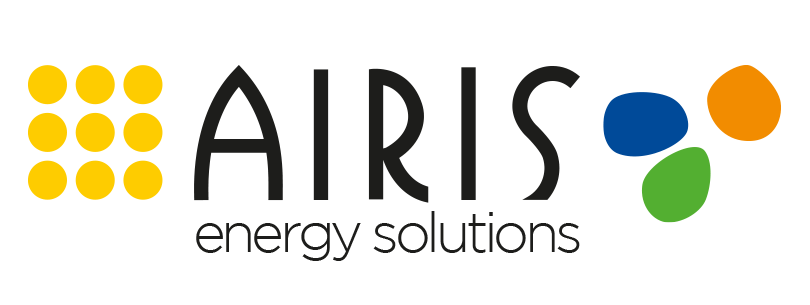8 reasons why you need LED lighting in your workplace
Offices and workplaces have been slower to make the switch to LED lighting, as many still use T5 technology due to its cheaper cost. However, LEDs are getting more and more efficient and popular. This article highlights the reasons why you too should make the jump to LED lighting in your office to improve productivity, health, wellbeing, safety, energy-usage, ergonomics, and cut business costs.
1. LED Lighting is Energy Saving
LED stands for light-emitting diode and are an incredibly energy efficient source of lighting. An LED light can last 50,000 times longer than a traditional halogen light. 95% of the energy in LEDs is converted to light and only 5% is wasted as heat. LEDs are also free from toxic elements found in other lights and are recyclable. They have a longer lifespan so have lower carbon emissions and fewer lights are needed so energy consumption is reduced.
2. LED Lighting Saves Your Business Money
Switching from normal light bulbs to LED lights not only saves energy, but saves your business money. The longer life of bulbs saves money for your business as less is spent replacing them. Switching to LEDs can save your company up to 80% and keep your bills low. Lighting also improves productivity, health, and employee well being, therefore boosting your business whilst keeping operating costs low.
3. LED Lighting Improves Safety
Emergency signs use LED lighting to highlight the nearest exit in emergencies as they are clear, bright and long-lasting. High-quality LED lighting allows workers to see hazards. Office space, stairwells, and exits are all well lit for an easy and safe emergency exit.
4. LED Lighting Benefits Health
Health is a big consideration for workplace lighting as poor lighting can cause health issues such as headaches, discomfort, eye strain, dizziness, and tiredness. Bruskin Goldring Research found that 85% of workers suffered from headaches as a result of poor lighting in the workplace. Kensington Technology Group listed eyestrain as a leading cause of stress in the workplace, and stress can lead to major health issues like anxiety, depression, high blood pressure, heart problems, diabetes, skin conditions, asthma and arthritis.
The Library of Medicine National Institutes of Health found that light influences human vitality, energy, mood, alertness and work performance. LED lighting can have a positive impact on employees and boost physical, physiological, and psychological health and well-being, which enhances performance and reduces absenteeism.
5. LED Lighting Enhances Productivity
With better health comes better productivity. Productivity is an important factor when choosing the right office lighting, and there is a direct correlation between light levels and performance in the workplace. Poor lighting and lack of brightness can reduce productivity and motivation. Bruskin Goldring Research found that workers believed that improved lighting in the workplace could improve mood, increase energy levels, and enhance productivity. Cornell University found that 24% of office workers claimed poor lighting as a cause of loss of work.
This study also found, however, that LED lighting can increase productivity by 3% – 5% throughout the day. LED lighting can regulate the body clock, boost mental performance, and make employees more alert and energetic. The EU’s Lighting for People project has proven that sufficient lighting in the workplace, such as LEDs, increases productivity, and the higher quality lighting, the better productivity.
6. LED Lighting Optimises Ergonomics
Ergonomics focuses on fitting the worker to the job, not the job to the worker, and aims to find the best way to get the most from the worker and increase efficiency. Lighting is consistently rated as a workplace concern by workers as lighting can either enhance an employee’s job or limit them, and impacts mood, comfort, and performance.
Lighting which causes reflections in screens, glares, and shadows are examples of bad workplace design and negative ergonomics, but LED lighting combats this by creating different environments for workers which makes the space more comfortable for them. LED lighting can be tailored to the worker’s needs and preferences to help them work to the best of their ability and ensure optimum performance.
7. LED Lighting Enables More Worker Control
LED lighting allows different people to use different levels of lighting. It is flexible to worker’s requirements and can be adapted to each employee’s needs. With LED lighting, workers can alter the controls themselves at their desks, so each worker is more productive and happier at work, using the lighting suits them.
The rise of controls has come hand in hand with the rise of LEDs. We are working in new and different ways and mobile working and hot-desking are growing in popularity with many working in different spots throughout the day. Task lighting is becoming more important to give people easy control over their own lighting and work more comfortably and productively throughout the day.
8. LED Lighting Promotes Corporate Social Responsibility
Corporate social responsibility is a corporation’s initiatives to take responsibility for the company’s effects of environmental and social well-being. To resolve corporate environmental issues, LED lighting reduces energy and carbon dioxide emissions and is environmentally friendly.
In relation to social responsibility, LED lighting improves employee health, safety, productivity, and ergonomics. One study found that 68% of all office workers were concerned about lighting, and Kensington Technology Group state that office workers consistently rated poor lighting as the first or second work environment concern. LED lighting can ease employee concerns about lighting as improves health, well-being, performance and comfort in the workplace.
It is clear that LED lighting will benefit your workplace and business in many ways. From saving energy, cutting costs, improving safety, and improving health, to enhancing productivity, optimising ergonomics, enabling worker control, and promoting corporate social responsibility, you need LED lighting in your workplace – it’s a win-win for employees and employers alike.



